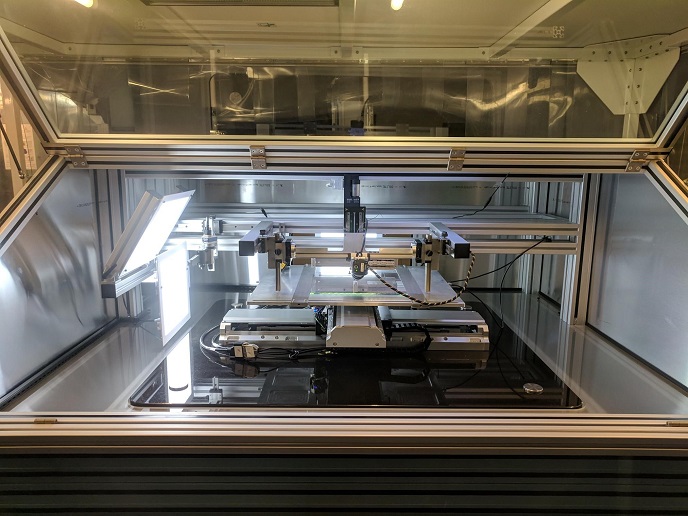Novel ink-jet system could take Printed Electronics to the next level
Printed Electronics (PE) has great potential to bring about a step-change in the electronics industry. But one of the barriers to this comes from the ink technology, which has not achieved the resolution or viscosity necessary. Consequently, the range of functional inks that can be printed, as well as the resolution and final properties of the printed/sintered structures and components, remain limited. The EU-funded Hi-Response (Innovative High Resolution Electro-Static printing of Multifunctional Materials) project is based on patented ESJET which incorporates a single and multi-head adaptation system that can achieve resolution, speeds and low-costs far surpassing current ink-jet systems. The ESJET system Explaining ESJET’s functioning, the team describes a reservoir feed system which holds the ink to be deposited, a capillary outlet tube and a charge rod connected to a high voltage supply, with its tip at the outlet tube’s entrance. The charge rod maintains an electric field potential between the fluid in the reservoir and any droplets that exit the emitter, landing on the substrate. To release ink drops, the electric field potential is altered by a set amount of controlled voltage. ESJET can print at a resolution of 1 micrometre, while achieving inks with a viscosity of up to 40 000 centipoise, meaning that it can print highly filled nano-inks and functional organic materials. The resultant printed/sintered structures can achieve high resolution with high-quality component properties. The system has been demonstrated for a wide range of materials, including: nano-copper, nano-silver and other nano-ceramic filled inks and pastes. These can be used for electrode structures (as small as 0.5-10 micrometres wide), semi-conductors, dielectrics organic polymers and reactive organo-metallic inks. “It’s funny but I can’t describe the elation that comes from printing conductive lines that you can’t see with the human eye. It is at this point that I realise, yes we really have something,” project coordinator Dr Pufinji Maclean Obene says. Meeting its goal, Hi-Response has printed these materials to create components such as: flexible automotive aerials and sensors, touch screens, flexible heating elements for radomes (the radar protecting domes) in electric vehicles and metal mesh for the organic light-emitting diodes (OLEDs) used in digital displays. However, Obene adds, “We are excited to announce that we will also be using ESJET to deposit quantum dot displays (QLED) for mobile phones and to print very small transistors, and aim to manufacture fully printed microprocessors for microelectromechanical systems (MEMs) used especially in medical devices.” Tapping a gap in the market Hi-Response supports the EU’s overall industrial strategy by optimising manufacturing efficiency and costs, while also generating jobs. Additionally, it contributes to environmental stewardship by reducing energy usage and greenhouse gas emissions during the manufacturing process. Based on the exploitation to date of Hi-Response’s technology for various applications, the consortium estimates their market to be worth around EUR 566 million per year. Taking commercialisation to the next level, the team are concentrating on a few specific components. These are principally the development of 3-micrometre QLED pixels, applications for Organic and Large Area Electronics (OLAE), as well as sensors and MEM devices – all key areas for the so-called ‘fourth industrial revolution’. “This field is currently limited by time, people and Research and Development funds,” says Obene. “But the Intellectual Property opportunities are incredible, so it’s full steam ahead for us!”
Keywords
Hi-Response, printed electronics, ink, additive manufacturing, Electro-static, micrometre, organic material, nano, automotive aerials, touch screens, electric vehicles, OLEDs







